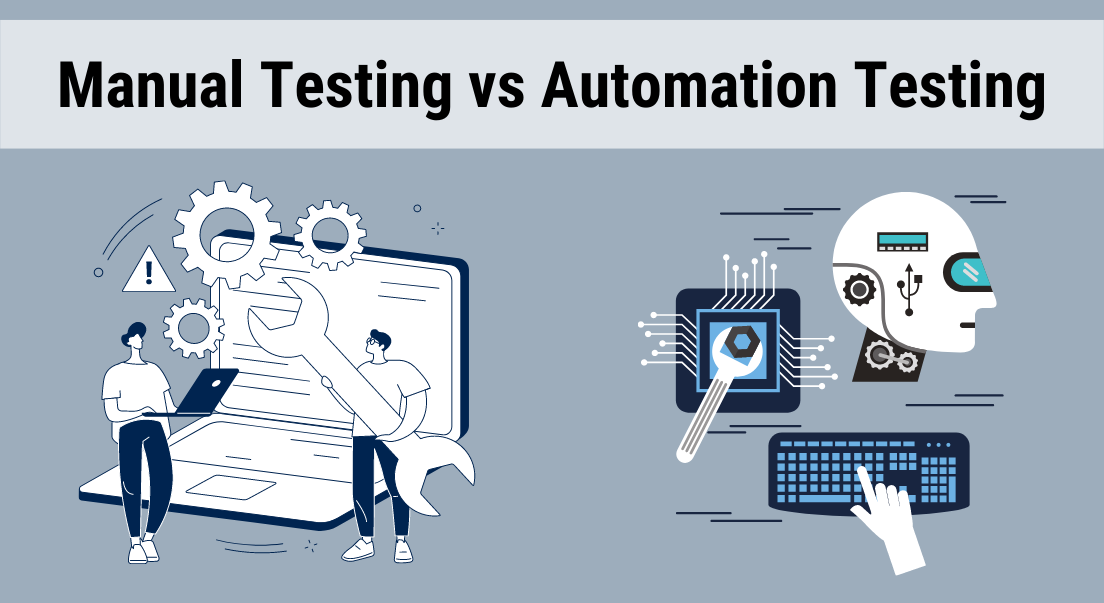Effective Automation Testing: Enhancing Software Reliability and Speed
Effective Automation Testing: Enhancing Software Reliability and Speed
Blog Article
From Manual to Automated Screening: A Comprehensive Overview to Transitioning Efficiently and Efficiently
In the realm of software application screening, the shift from handbook to automated procedures has ended up being an increasingly crucial change for companies looking for to enhance performance and precision in their screening practices. The trip from handbook to automated testing is not without its obstacles, yet when approached strategically and with a clear strategy in mind, the advantages can be substantial.
Benefits of Automated Checking
Automated testing offers many advantages, boosting efficiency and precision in software program development processes. One primary advantage is the significant decrease in screening time. Automated tests can be run simultaneously on several tools and running systems, considerably accelerating the screening stage contrasted to hand-operated testing. This enhanced efficiency allows for faster feedback on the high quality of the software application, enabling programmers to determine and address concerns quickly.
Moreover, automated testing makes sure a greater degree of accuracy in spotting problems. Since automated tests comply with predefined scripts, human mistake is minimized, bring about more trusted examination outcomes. Consistency in testing is also improved, as automated examinations execute the same actions specifically each time they are run. This uniformity is critical in guaranteeing that all capabilities of the software application are thoroughly evaluated, minimizing the chance of unnoticed insects slipping with to production.
Choosing the Right Tools

First of all, evaluate your demands and goals. Comprehend the range of your project, the technologies involved, and the capability of your group. This evaluation will aid you determine the attributes and capabilities you require in your testing tools.
Secondly, take into consideration the compatibility of the devices with your existing systems and processes. Smooth integration with your existing software application advancement lifecycle is necessary to guarantee a smooth change to automation.
Additionally, assess the scalability and adaptability of the tools. As your testing requires develop, the tools should have the ability to adjust and accommodate adjustments effectively.
Finally, element in the assistance and community around the devices. Durable support and an energetic individual community can give valuable sources and help when executing automated screening. By thoroughly taking into consideration these facets, you can select the right tools that align with your requirements and set the phase for a successful shift to automated testing.
Writing Reliable Examination Manuscripts

When crafting examination scripts, it is vital to take into consideration the certain needs of the software application being checked and make sure that the manuscripts resolve all crucial functionalities. Clear and descriptive calling conventions for examination manuscripts and test situations can enhance readability and maintainability. Furthermore, integrating error handling devices within the examination scripts can help in identifying and resolving issues without delay.
Moreover, arranging examination manuscripts right into modular components can enhance reusability and scalability, lowering redundancy and boosting effectiveness in test manuscript upkeep. Normal testimonials and updates to check scripts are important to equal progressing software application demands and capabilities. By complying with these principles, testers can produce reliable and robust test scripts that add considerably to the success of automated screening procedures.
Integrating Automation Into Workflows
By flawlessly integrating automated screening devices like Selenium or Appium into the software growth lifecycle, groups can achieve faster feedback on code modifications, leading to quicker bug detection and resolution. This combination enables for continuous testing throughout the development process, guaranteeing that any issues are recognized early on, resulting in greater software program top quality. Correct integration of automation devices calls for collaboration in between growth, screening, and procedures groups to establish a unified operations that enhances effectiveness and performance in supplying high-quality software application items.
Ensuring a Smooth Transition
Effectively transitioning to automated screening entails thorough preparation and cautious execution to take full advantage of and minimize disruptions efficiency in the software program advancement process - automation testing. To make certain a smooth shift, it is essential to start by conducting a thorough evaluation of the existing screening procedures and determining areas where automation can bring one of the most significant advantages. Engaging with all stakeholders early on while doing so, consisting of Click This Link developers, testers, and job managers, is essential for gathering support and buy-in for the automation campaign
Interaction is crucial during this shift stage. Clear communication of the objectives, advantages, and assumptions of automated testing aids to manage any resistance or concerns that may occur. Additionally, providing adequate training and resources for employee to upskill in automation tools and techniques is vital for ensuring an effective shift.

Conclusion
To conclude, transitioning from handbook to automated testing supplies various benefits, including enhanced performance and reliability. By choosing the appropriate tools, composing effective test scripts, and incorporating automation seamlessly into process, organizations can ensure a smooth and effective transition. It is vital to welcome automation as a beneficial asset in software screening processes to boost overall high quality and productivity.
In the realm of software testing, the change from handbook to automated procedures has come to be a progressively vital shift for organizations looking for to improve performance and precision in their screening methods. Automated examinations can be run all at once on several tools and operating systems, substantially speeding up the screening stage compared to manual testing. Consistency in testing is additionally improved, as automated tests carry out the same steps precisely each time they are run.To ensure the effective application of picked screening tools, the development of effective test click here now scripts plays an essential role in confirming the capability and efficiency of automated processes - automation testing. By adhering to these concepts, testers can develop durable and reliable test scripts that contribute substantially to the success of automated testing procedures
Report this page